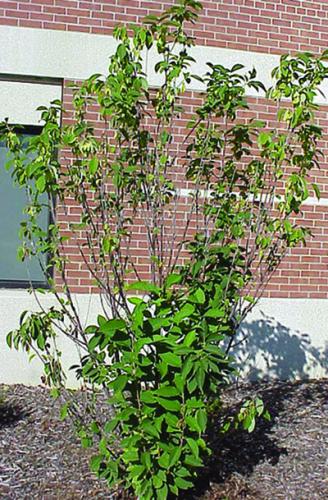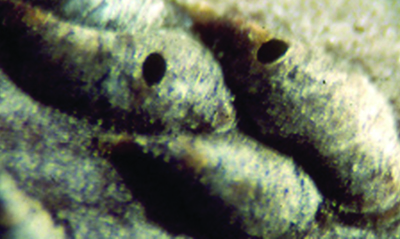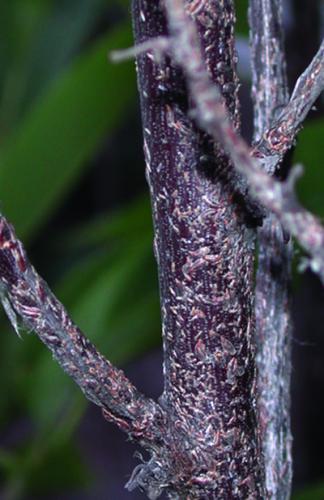Oystershell scale
July 30, 2015
Lapidosaphes ulmi
This armored scale has two forms (lilac and apple) that attack numerous hosts, including ash, lilac, maple, willow, crabapple, linden, elm and others. It overwinters as eggs, which hatch in mid-May, when black cherry or blackhaw viburnum are in full bloom. No honeydew is produced.

Symptoms of oyster shell scale include dieback of branches and twigs, yellowed or undersized foliage and an unthrifty appearance, as shown on this Carolina silverbell.
Management
Target first generation crawlers with insecticides or oil.

Scales with exit holes caused by emerging parasitic wasps.
The first generation of crawlers should have emerged by the time Spirea x vanhouttei is in full bloom, in mid- to late May. There is one generation of the lilac form and two of the apple form per year. Twice-stabbed lady beetles and parasitic wasps are natural enemies of oyster shell scale.

Brown-to-grayish oyster shell shaped scales, about 3 mm long, form a crust on the bark.
Print a PDF of this page: Oystershell scale



 Print
Print Email
Email

